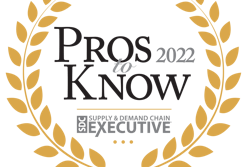
The Coronavirus disease (COVID-19) pandemic forced virtually every business function to change how it worked, step into new roles and adapt to extremely challenging market and operational conditions. For many of those functions, those changes – while significant – were short-term, and designed to help them weather the storm.
But, for procurement teams, the pandemic has accelerated an evolution for the function, one that was already well underway before COVID-19 hit. It propelled the function’s journey from “back office spend optimizer” to “strategic value creation all-star.” And now, there’s no going back.
Over the past 18 months, leading procurement functions have stepped up to deliver business value far beyond simple cost savings and margin optimization. And, their organizations want them to keep delivering it.
As a result, we’re seeing a new kind of procurement function emerge from the pandemic. It’s a stronger, more empowered function, characterized by three key evolutions:
Evolution #1: From reactive damage mitigator to proactive risk expert
Procurement has always been strong in times of crisis. But, in the past, teams have been restricted by the historical pricing, demand and trend data available to them. That retroactive insight meant that procurement teams were always looking for the best ways to react to a crisis, rather than sidestepping emerging threats proactively.
Thanks to recent advances in analytics and intelligence capabilities, as well as the emergence of sophisticated insight-delivery solutions, the crisis events of the last 18 months have given us our first real opportunity to see the power of proactive crisis insight in action.
Procurement teams empowered with these capabilities were able to identify the early indicators of major supply chain disruptions and take proactive actions to safeguard against them. They shifted between suppliers, sourced from new geographies and rebuilt entire category strategies to ensure that their companies could continue operating as conditions worsened.
But, business continuity was just the beginning of the benefits seen by these teams. Because they were able to watch these trends emerging, leading procurement teams were able to map and understand the potential impacts of each crisis on the business and provide valuable input for crisis management and risk mitigation.
Evolution #2: From supply administrator to strategic innovation driver
During the pandemic, supplier relationships have been more valuable and important than ever. At the peak of the disruption, the right relationship with a strategic supplier could mean the difference between business as usual and completely halting operations.
Leading procurement teams have been building high-value relationships with suppliers for decades, but the events seen in 2020 and 2021 were a powerful opportunity to showcase their value to the rest of the organization. As a result, organizations are now more interested than ever in the other great ways that procurement teams can create value from these relationships.
Exclusive contracts negotiated with suppliers, for example, are a valuable asset for supporting innovation. Through the contracts they help create, procurement teams can build partnerships that have a huge impact on overall business strategy, bringing new USPs into the organization.
As the first point of contact for suppliers, nobody in the business knows what’s happening with those suppliers better than your procurement team. That means they’re exposed to things like new products, new materials, new capabilities and new offerings before anyone else, all of which can be used to drive commercial, product and innovation strategies.
The leading teams of today aren’t just filing orders and signing invoices for suppliers – they’re partnering with them strategically. Now, businesses are waking up to the implications that has for innovation and harnessing procurement teams’ potential as innovation drivers.
Evolution #3: From data comber to action-oriented all-star
Procurement experts can spend hours sifting through data to identify trends that might impact the commodities, markets and suppliers they depend on. That has delivered immense value to businesses. But today, it’s not necessarily the best use of the procurement team’s time.
In recent years, sophisticated insight and intelligence solutions have transformed how procurement teams gather, consume, understand and act on commodity and market intelligence. And once again, the pandemic has proven to be a powerful test of how those capabilities support teams and enable value creation in times of crisis.
At a time when every second counted, procurement teams saw immense value from those solutions, and put them to use to act faster and stay ahead of competitors who were facing the same challenges and choices.
The pandemic has helped organizations understand that the modern procurement function is able to deliver the greatest value when it’s empowered with timely, actionable insights enabled via the right tools and technologies, rather than having to generate those insights manually.













